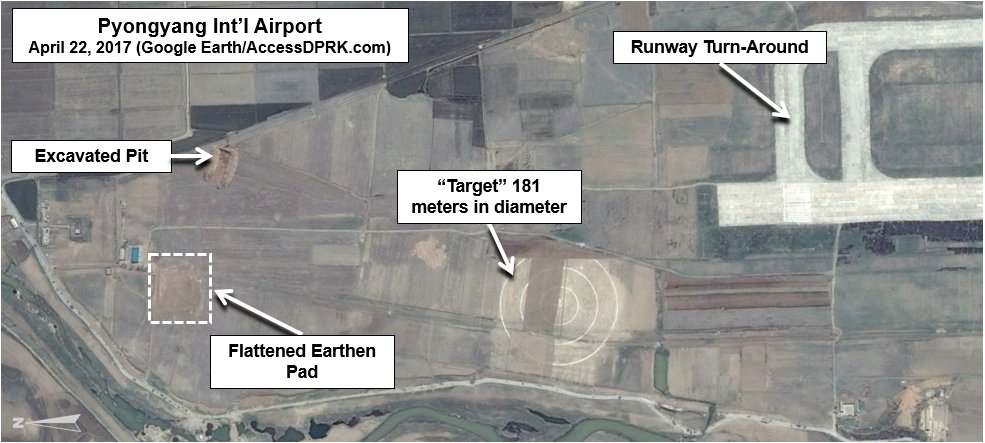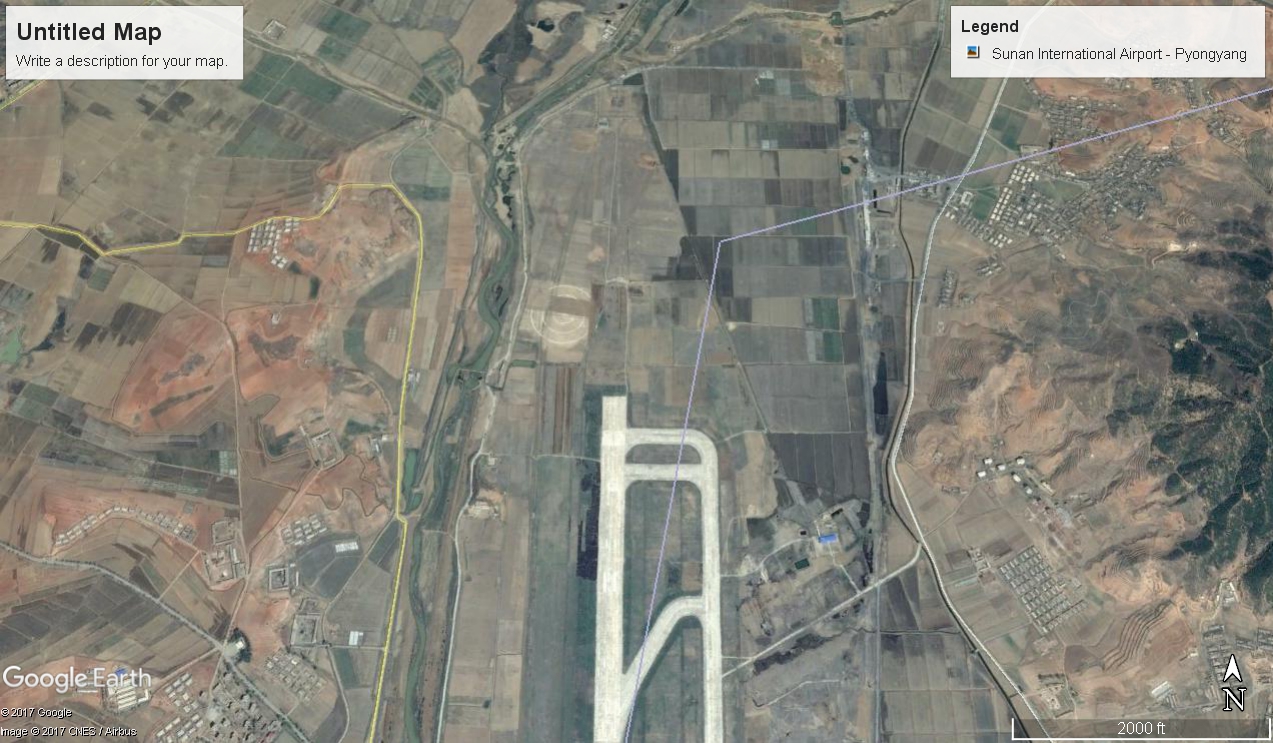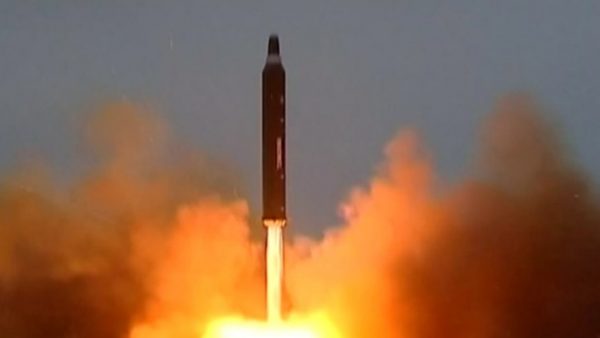Why no country shot it down?
In part: While the US and Japan have conducted ballistic missile defense exercises and both have Aegis-equipped ships capable of shooting down some ballistic missiles, it would be extremely difficult for the US or Japan to intercept a North Korean intermediate or intercontinental ballistic missile in flight over Japan toward a target such as Guam. The Aegis system is capable of intercepting shorter-range missiles in mid-course with the SM-3 missile, and it also provides “terminal phase” defense with the SM-2 missile closer to the ballistic missile’s target. But it’s uncertain whether either system would be successful against a “pop up” attack with an ICBM.
The SM-3 Block IIA has an operational range of about 1,350 miles. But range isn’t the issue as much as the speed required to intercept. If a North Korean missile were fired to an altitude of over 500 kilometers, success in a shoot-down would depend greatly on how quickly the missile was tracked and the timing of an interceptor launch. Based on the time/distance envelopes for SM-2 and SM-3 missile intercepts calculated from Joan Johnson-Freese (a professor at the Naval War College and a lecturer at Harvard University) and Ralph Savelsberg (an assistant professor at the Netherlands Defence Academy), an Aegis defender would only have a few minutes to get off a shot at an ICBM launch from North Korea. Aegis-equipped destroyers and cruisers would have to be dangerously close to the North Korean coast to get a chance to strike an ICBM in “boost” phase as it rose and could be vulnerable to North Korean submarines if an actual attack were planned. Read more here.
***
North Korea has taken steps in recent months to disguise their missile-related activities, including fueling rockets inside structures, outside of aerial view.
There are three basic ways the U.S. gathers most of its foreign intelligence: collecting information from human spies; intercepting electronic communications; and observing what’s happening on the ground, mainly with satellites.
The National Security Agency, which hacks computers and intercepts email, has had some success pulling bits and bytes out of North Korea, former officials say, but North Korea is much less forgiving than most of its targets. That’s because most of the country is not connected to the internet and few people have cellphones. To the extent that the regime communicates electronically, it has made increasing use of encryption, experts say.
“If you look at that satellite picture [of Asia] of the lights at night from the satellite, there is one dark area with no lights on, and that is North Korea,” Coats told Congress. “Their broadband is extremely limited. So using that as an access to collection — we get very limited results.” More here.
N. Korea must be met with stronger action: U.S. experts
WASHINGTON, Aug. 29 (Yonhap) — North Korea must be met with stronger action if it is to be stopped from triggering a catastrophe on the Korean Peninsula, U.S. experts said Tuesday.
The firing of an intermediate-range ballistic missile over Japan earlier in the day was a rare hostile act that increased the chances of a military confrontation in the volatile region.
The United States and South Korea must take decisive action to demonstrate that the regime in Pyongyang will not be allowed to get away with any more provocations, and China, they noted, will have to play a key role in that effort.
KCNA has released photos of the HS-12 launch that overflew Japan
“China has the power to increase the pressure on North Korea and must take steps towards doing so,” said Donald Manzullo, president of the Korea Economic Institute of America. “The longer China continues to refrain from using all of the leverage at its disposal to convince North Korea to return to talks, the more likely North Korea is to miscalculate.”
Beijing is Pyongyang’s only major ally and key benefactor. U.S. President Donald Trump and others have urged China to do more to rein in its wayward neighbor, but Beijing has refused to bear responsibility for the North Korean nuclear problem.
Bruce Bennett, a senior researcher at RAND Corp., said the latest launch could have resulted in part from a lack of action by the U.S. and South Korea against what was seen as a low-intensity provocation Saturday. North Korea launched three short-range ballistic missiles then.
“If the (U.S. and South Korea) fail to act seriously against (Tuesday’s) test, the North may feel that it can commit an even more serious provocation, while the exercises are ongoing, perhaps even another intercontinental ballistic missile test or a nuclear weapon test,” he said in an email.
Bennett was referring to the Ulchi Freedom Guardian military exercise currently under way between South Korea and the U.S. Analysts have said the back-to-back provocations were staged in response to the annual drills, which Pyongyang views as rehearsals for an invasion.
North Korea may also believe it has China’s backing because Beijing recently proposed the allies cancel their drills in exchange for a halt to North Korea’s missile and nuclear testing, he noted.
Robert Manning, a senior fellow at the Atlantic Council, said the U.N. Security Council is likely to adopt tougher sanctions against Pyongyang.
“There may be other steps Trump is considering to take unilaterally, whether cyber or kinetic. The key question is: How far is China prepared to go?” he said in a separate email. “But even if effective, sanctions will take time to have an impact — nine to 12 to 15 months. The danger is that this cycle of tensions rises to the point where the U.S. seeks more immediate results. That could be catastrophic.”


The North Korean single stage Hwasong-12 is a liquid fueled IRBM of estimated 4500 km range.
The Hwasong-2 appears to be a stretched improved version of the Hwasong-10 IRBM and appears to be single staged.
The missile was first shown in the 2017 military parade and has conducted its first successful flight after three failures in May 2017 from a site near Kuosong, likely Panghyon Air Base, on a lofted short range trajectory of 787 km range and 2111 km apogee height, which hints to a maximum range of about 4500 km.
For more information regarding the DPRK airfields and what is underground at those airfields across the country, go here.

